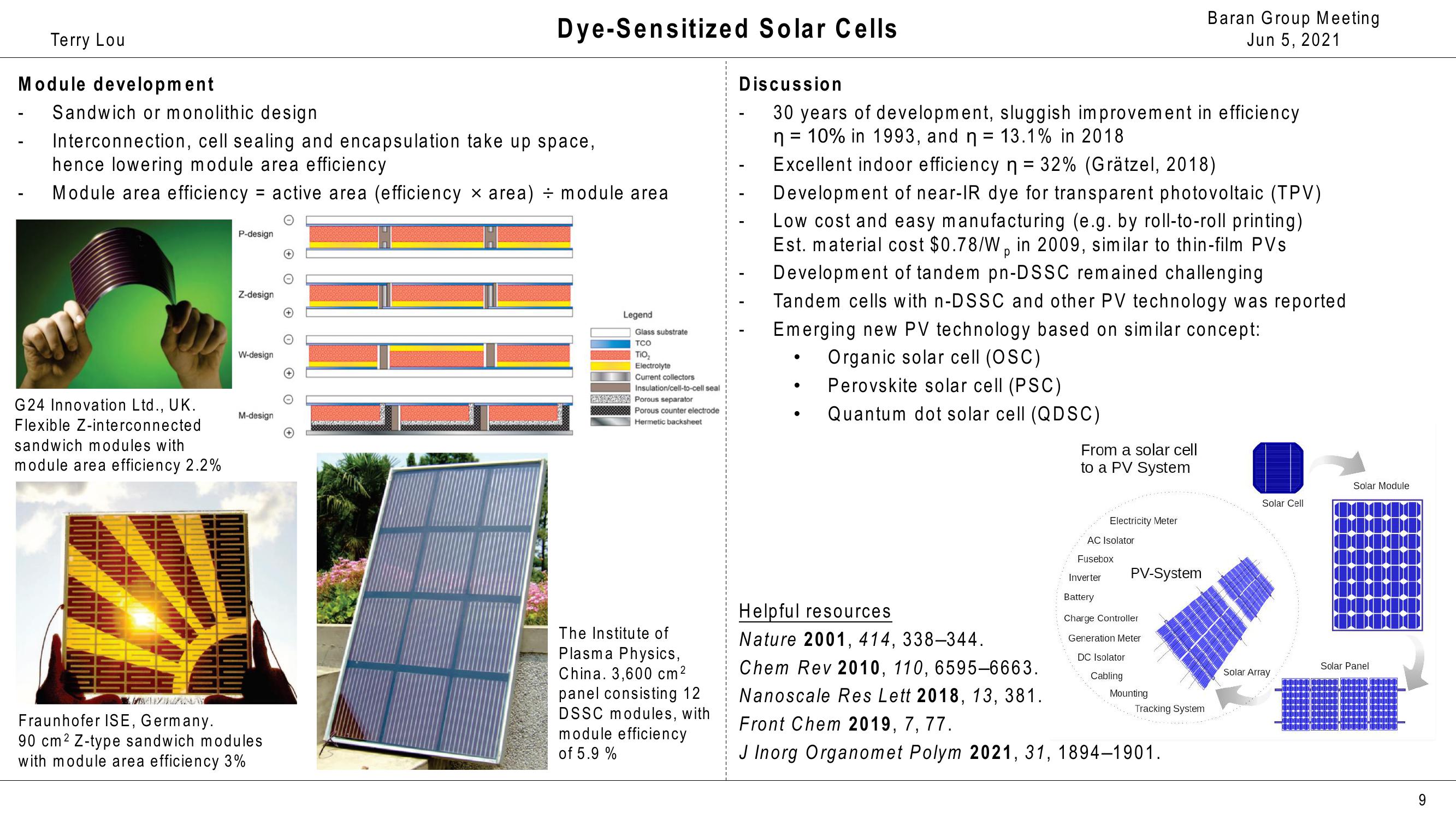Baran Group Meeting
Terry Lou
Module development
-
-
-
Sandwich or monolithic design
Dye-Sensitized Solar Cells
Interconnection, cell sealing and encapsulation take up space,
hence lowering module area efficiency
Module area efficiency = active area (efficiency × area) ÷ module area
G24 Innovation Ltd., UK.
Flexible Z-interconnected
sandwich modules with
module area efficiency 2.2%
P-design
Z-design
W-design
M-design
+ O
+ 0
+
Legend
Glass substrate
TCO
ΤΙΟΣ
Electrolyte
Current collectors
Insulation/cell-to-cell seal
Porous separator
Porous counter electrode
Hermetic backsheet
Discussion
Baran Group Meeting
Jun 5, 2021
30 years of development, sluggish improvement in efficiency
n = 10% in 1993, and n = 13.1% in 2018
Excellent indoor efficiency n = 32% (Grätzel, 2018)
Development of near-IR dye for transparent photovoltaic (TPV)
Low cost and easy manufacturing (e.g. by roll-to-roll printing)
Est. material cost $0.78/Wp in 2009, similar to thin-film PVs
Development of tandem pn-DSSC remained challenging
Tandem cells with n-DSSC and other PV technology was reported
Emerging new PV technology based on similar concept:
•
Organic solar cell (OSC)
.
Perovskite solar cell (PSC)
•
Quantum dot solar cell (QDSC)
From a solar cell
to a PV System
MAY
Fraunhofer ISE, Germany.
90 cm² Z-type sandwich modules
with module area efficiency 3%
The Institute of
Plasma Physics,
China. 3,600 cm²
panel consisting 12
DSSC modules, with
module efficiency
of 5.9 %
Helpful resources
Nature 2001, 414, 338–344.
Chem Rev 2010, 110, 6595-6663.
Nanoscale Res Lett 2018, 13, 381.
Front Chem 2019, 7, 77.
Electricity Meter
AC Isolator
Fusebox
Inverter
Battery
PV-System
Charge Controller
Generation Meter
DC Isolator
Cabling
Mounting
Tracking System
J Inorg Organomet Polym 2021, 31, 1894-1901.
Solar Module
Solar Cell
Solar Panel
Solar Array
6View entire presentation